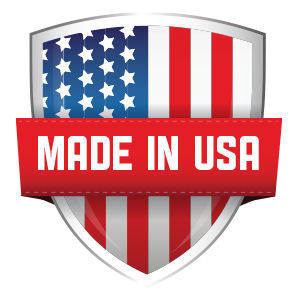American manufacturing is at a crossroads again. Companies are ramping up domestic capacity, but struggling to run what they’ve already built. Everyone’s excited about reshoring, but we’re watching the consequences unfold in real time. Every new site adds more strain to a labor pool that’s already tapped out.
The real competition isn’t just other manufacturers
The labor shortage isn’t just about the number of available workers, it’s about who manufacturers are competing against. Today’s labor force has options that didn’t exist five years ago.
Fulfillment centers advertise $22/hour starting wages. Entry-level construction jobs pay $35/hour. Gig platforms let workers choose their hours, their workdays and their autonomy. Traditional manufacturing jobs, especially those that are physically demanding and offer little flexibility, have to contend with a labor market where workers have more leverage and better alternatives.
Manufacturing labor shortages derail reshoring momentum
Labor constraints are forcing companies to rethink how they scale. Across sectors, facility openings are delayed, capital projects are paused and new business is turned down. Not because the demand isn’t there, but because staffing can’t keep pace.
Food processors, building products suppliers and chemical manufacturers are all reporting extended vacancies in roles that once filled quickly. Shift coverage, especially on nights and weekends, is becoming harder to maintain. In some cases, entire production lines remain underutilized due to chronic understaffing.
Reshoring still offers long-term supply chain and cost advantages, but manufacturers relying on manual labor to support that strategy are running into a new operational reality: rising wages and shrinking availability. Systems designed for a 2019 labor market are failing in 2025.
The automation gap is widening
Manufacturers with automation already in place are better positioned to scale. These companies are acquiring idle facilities, fulfilling contracts that others can’t support, and building reputations on delivery performance instead of staffing luck. The gap between automated and manual operations is visible on the floor and in the bottom line.
Initial conversations around automation have changed significantly
Three years ago, automation investment discussions focused on cost savings and payback periods. Today, the questions are more urgent:
How soon can a system be installed?
What’s the lead time?
Can delivery be guaranteed?
How do you support the system’s lifecycle?
Manual palletizing remains one of the most vulnerable points in the production line. Even under ideal conditions, manual teams often reach only 60–70% of rated line speed. Automated palletizing systems routinely achieve 99% efficiency and maintain it consistently, regardless of shift schedules, fatigue or seasonal demand.
When output surges, the contrast becomes even more pronounced. Manual operations slow down. Automated systems maintain performance without requiring extra labor or overtime.
Start where the labor gap hurts most: end-of-line
Labor instability tends to hit end-of-line roles around palletizing, packaging and loading first. These positions are notably lower-wage, high-turnover positions. Unlike upstream operations that require skilled technicians or machinists, end-of-line jobs often rely on a revolving workforce.
That makes them the ideal starting point for automation.
Automating palletizing offers fast relief without disrupting upstream workflows. It also eliminates a common bottleneck: when throughput increases upstream, manual palletizing often can’t keep up. We’ve seen advanced equipment sit idle simply because the boxes can’t be moved out fast enough.
Sequence matters. Automating upstream processes before addressing downstream constraints can waste capital and cause frustration on the floor. A staged approach beginning with end-of-line automation creates stability and sets the foundation for further investment.
Automation scales when labor can’t
One of automation’s biggest advantages is its ability to flex without recruiting. In seasonal production environments where peak periods require a temporary headcount spike, manual operations depend on onboarding, training and retaining short-term workers. That’s expensive and unreliable.
Automated systems scale instantly. They run longer hours without fatigue, maintain quality standards without additional training and respond to urgent production shifts with minimal intervention.
Emergency orders are a clear differentiator. Where manual plants scramble to assemble a crew, automated facilities adjust runtime and output speeds to meet the deadline without compromising consistency or safety.
Operational predictability is the new ROI
The financial logic of automation has expanded. Manufacturers must commit to delivery timelines months in advance. Automation provides a level of control that manual operations simply can’t.
Facilities that rely on automation can pursue higher-volume contracts, meet tighter shipping windows, and reduce their exposure to workforce variability. They’re not making decisions based on whether enough people will show up for second shift. They’re building operations around systems that perform, every day.
The result is measurable: automated facilities consistently report higher on-time delivery rates, more stable output quality and stronger customer retention. They operate with fewer unknowns and that advantage compounds significantly over time.
As reshoring accelerates, these capabilities won’t just be nice to have. They’ll be the difference between facilities that can grow… And those that can’t keep up.
¹ 2025 Manufacturing Outlook Report
² Manufacturing Workforce Analysis, 2024
³ Association for Advancing Automation, Industry Report 2024



